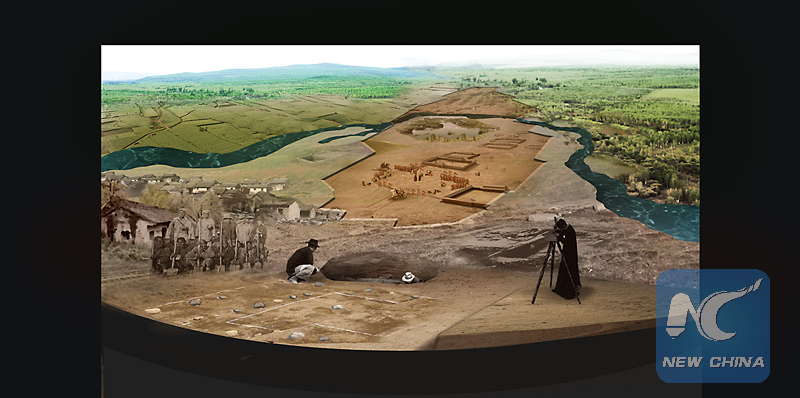
File photo of the Yinxu site (Photo from Anyang branch of the Chinese Academy of Social Sciences Institute of Archaeology)
ZHENGZHOU, July 21 (Xinhua) -- Famous for the discovery of oracle bones and script, the Yinxu site, or Yin Ruins, in today's Henan Province are once again in the spotlight with the excavation of a complete canal system in the ancient capital.
Archeologists have excavated an area of dozens of hectares in Yinxu, revealing ruins of the bustling ancient city with a two and half kilometer canal through its center.
Tang Jigen, head of the Anyang branch of the Chinese Academy of Social Sciences Institute of Archaeology, said that the man-made canal was both the city's water supply and the main infrastructure serving craft workshops in the city 3,000 years ago.
Yin was the last capital of the Shang Dynasty (1600 BC - 1046 BC) and excavation of the ruins officially began as early as 1928, one of China's earliest archeological projects. A large number of heritages have been found at the site, making it one of China's 100 greatest archaeology discoveries in the 20th century.

The picture shows the palaces in the city 3,000 years ago (Photo from Anyang branch of the Chinese Academy of Social Sciences Institute of Archaeology)
"During 88 years of excavation, it is our greatest regret that no traces of city walls have ever been found," said Tang, who believes the canal to be just as important in proving Yin as an ancient capital city.
The 4-meter-deep main canal channeled water from the Huanhe River from northwest to southeast and was up to 6 meters wide. It had dams to control the water flow.
At the eastern end, it breaks down into many branches which wind their ways through workshops for making bronzeware, bone articles and pottery.
"The water system covers about half of the city, running through workshops and the residential areas for commoners, located south of the palaces and temples," said Tang.
In addition to the canal, archeologists have exposed the city's road system, composed of two south-north arterial roads and three east-west roads. These main roads run through the palace and temple area, where there are also ruins of a public square. The two south-north roads are 10 and 20 meters wide.
Yinxu was inscribed in the UNESCO world cultural heritage list in 2006. In addition to China's earliest characters on bone or tortoiseshell, the site was home to the world's heaviest ancient bronze item, Houmuwu ding, a sacrificial vessel.
An area of 36 square km surrounding the ruins has been sealed off to protect the site and allow researchers to work in peace. A heritage park is planned.

